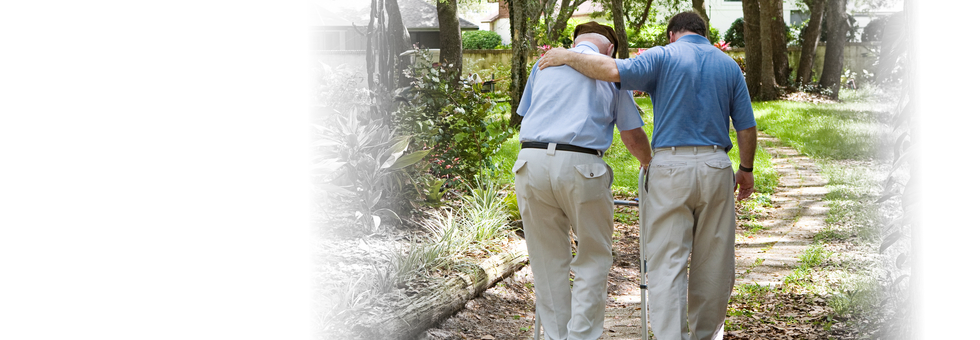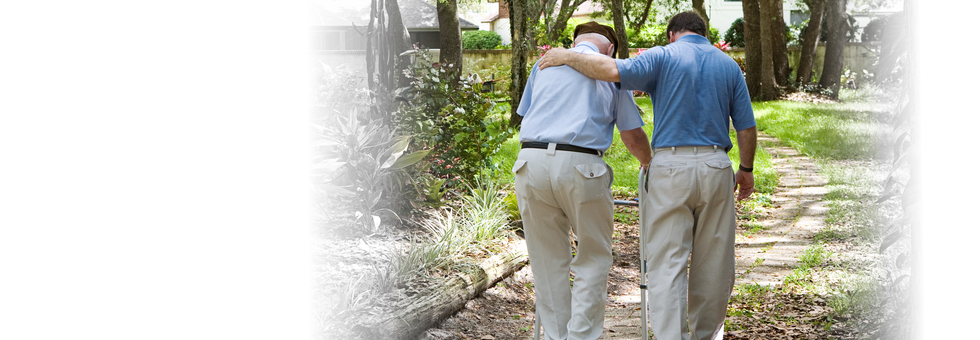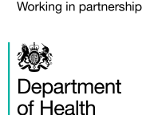Download the whole case study as a PDF file (515KB)
Summary
John is an older white British man with physical health problems. His son, George, moved back in with him recently, to support him after a stay in hospital. George has an acquired brain injury and John reported to his GP that he sometimes threatens him, and has become violent on a few occasions. John’s GP was concerned for John’s safety, so made a referral to social care about George’s behaviour.
This case study concerns issues around older male victims of domestic abuse; interfamilial abuse; perpetrators with social care needs; and complex caring relationships.
When you have looked at the materials for the case study and considered these topics, you can use the critical reflection tool and the action planning tool to consider your own practice.
Case details
Download the case details as a PDF file (413KB)
John is 70, and a retired solicitor who lives in a comfortable home in a rural village with his son, George. His wife, Violet, died when George was 20.
John’s health deteriorated two years ago following a heart attack; he had a programme of reablement for six weeks following his return from hospital and shortly afterwards his son George moved in to support him. John finds it tiring to do anything physical. His continuing heart problems mean he has become more and more dependent on George over time, and has started to need support with his personal care. His heart condition has resulted in him recently being diagnosed with vascular dementia. George does most of the housework, gardening, shopping, cooking, cleaning and walking the dogs.
George has an acquired brain injury from a motorbike accident which happened soon after his mother died. This has resulted in him experiencing lifelong disability including headaches, depression and mood swings. He has difficulties with his memory and attention and can be irritable and aggressive at times. George has never been able to manage working full-time but before living with his father he worked in a shop part-time. He stopped working when he moved to care for John. Moving in with his father also meant that the financial difficulties he was facing as a result of his rent increases were reduced.
John’s pension provides them both with enough money to live on. George is not claiming any benefits and has refused to be assessed as a carer. John has suggested recently that he could bring in a care worker to do some of the jobs that George is undertaking. George will not hear of this, insisting that he is fine and he doesn’t mind looking after his dad. He became angry with John, asking why John couldn’t have confidence in him ‘like a father should in a son’. However, when he is angry he also complains that he doesn’t have time to live his own life any more.
John’s GP has contacted social services because John reported that George has started to become violent towards him. George has threatened violence and actually punched and kicked John on a number of occasions. John wants help for George.
How would you make safe enquiry with both John and George?
Who will meet with each of them?
Where?
How will you contact them to arrange the meeting/s?
Assessment
In this section are two downloadable PDFs – one is a partly completed assessment form related to this case study, and another is an example of what a completed form could look like.
Suggested exercise
Download the partly completed assessment as a PDF file (487KB)
Download the completed assessment as a PDF file (487KB)
Use the partly completed assessment form:
- What actions would you discuss with John to ensure his immediate and longer term safety?
- What precautions would you need to take to avoid putting him at higher risk of harm?
- What is your analysis of the situation? Is coercive control occurring? What is the evidence of this?
- What is your conclusion?
DASH- RIC
Download the blank DASH_RIC as a Word .doc file (226KB)
The purpose of the DASH risk checklist is to give a consistent and simple tool for practitioners who work with adult victims of domestic abuse in order to help them identify those who are at high risk of harm and whose cases should be referred to a MARAC meeting in order to manage their risk. If you are concerned about risk to a child or children, Safe Lives recommend that you should make a referral to ensure that a full assessment of their safety and welfare is made.
There are two downloads on this page.
One shows a blank DASH risk checklist, with quick start guidance from Safe Lives. The key point is to remember that your professional judgement is key in making a decision about risk; a tool can help, but the score it comes out with is not definitive.
This is especially relevant when working with people with care and support needs, for whom some of the questions may not be relevant.
Download the case study DASH-RIC as a PDF file (206KB)
The other shows an example of a completed DASH relating to this case study, for you to critique and appraise.
Suggested exercise:
- Read the case details and full assessment document for this case study.
- Using the information contained, fill out a blank DASH risk assessment tool.
- Discuss how you found it; did you have all the required information? Would you be able to get all the required information in practice? Would you make a referral to MARAC?
Topics
This section picks out three main topics from the case study featured. For John’s case study, the topics include:
- Complex caring relationships
- Working with perpetrators with care and support needs
- Male survivors
A selection of references, tools and further reading for each topic is below.
Complex caring relationships
Guidance from LGA and ADASS (Lewis and Williams, 2015) explains:
‘The principles of safe enquiry and victim centred risk assessment are the same whatever the cause or motivation for the abuse…Where the person causing harm has care and support needs it is best practice for these to be assessed and provided for separately to services for the adult who has care and support needs.’
Tool 1 outlines the ‘Triangle of Care’, a resource produced by the Carer’s Trust to ensure that carers are appropriately involved in social care arrangements for the people they care for. You can use the tool to reflect on what else you might need to consider where coercive control is suspected.
Michael P. Johnson’s work offers a framework for considering different types of domestic abuse, making a distinction between intimate terrorism, violent resistance and situational violence:
‘There is growing recognition that intimate terrorism (violent coercive control) and situational couple violence (situationally-provoked violence) may need to be addressed in different ways‘. (Tavistock Relationships, 2016)
The Tavistock Centre for Couple Relationships argues for moving ‘towards a more relational conceptualisation of, and approach towards tackling, domestic violence‘ particularly in the context of situational violence as opposed to intimate terrorism:
Tavistock Centre: Working relationally with couples where there is situational violence
‘Harmed-Harmful’ continua: Older parents of adult children with care and support needs.Taking a medical model (gerontological) perspective, which from a social work perspective requires some critique of language of pathology, Band-Winterstein et al’s (2015) paper offers a useful exploration of the challenges older parents of an adult child with mental ‘disorder’ face.
‘Sixteen parents aged 58 to 90 were interviewed in depth. Three major themes emerged: (a) ongoing total care for the child’s needs along the life course, (b) constructions and perceptions of the child through the years—Parents perceived their children over two continua, reflecting their experience of the child’s deviant behavior: the child as more harmed versus more harmful, the child as normative versus pathological—and (c) the parent’s emotional world toward the harmed–harmful child. The findings enable a deeper understanding of the various ways in which parents cope.’
Using a multi-dimensional approach (see theories of Intersectionality, Case study 1 Ayesha Topic: Intersectionality), thinking purely in terms of a perpetrator-survivor binary may not take sufficient account of the situational context – John’s parental love for and loyalty towards his son who has care and support needs himself.
Working with perpetrators with care and support needs
The Respect website details guidance and support for working with perpetrators of domestic abuse.
Lewis and Williams (2015:53) in their section on working with perpetrators with care and support needs consider behaviour indicators of people with mental ill health:
‘Most people with mental ill health do not behave abusively. If someone is random or unpredictable in whom they are abusive to, for example, members of the public and people at work or in the community, then their poor mental health may be causing their behaviour. However, if the abuse is directed towards one person, in a careful and planned way, that leaves the victim feeling controlled and powerless then it can be reasonably conclude that the person is making a choice to behave in that way.’
Information about the possible effects of Acquired Brain Injury is available here:
Headway: Effects of Brain Injury
BASW and the Brain Injury Social Work Group (BISWG) have recently produced Practice Guidance for Social Workers working with people where there may be an Acquired Brain Injury:
Practice Guidance for Social Workers working with people where there may be an Acquired Brain Injury
Within the Guidance there is a link to using a Brain Injury Needs Indicator (BINI). People working in the professions (local authority or NHS professionals experienced in assessment) can apply for a free download of this tool to be used alongside their usual assessments:
The Disabilities Trust: Brain Injury Needs Indicator
Video
The Brain Injury Needs Indicator (BNI) (4:55 mins):
Having trouble with the embedded player? Go directly to the video page:
https://www.youtube.com/watch?v=P701qUtkjd0
Tool 2, below, gives further information.
Male survivors
Much of the literature focuses on female violence towards men and support services for male survivors of abuse, coercion and control in intimate couple relationships (heterosexual and gay couple relationships):
Men’s Advice Line: Advice and support for men experiencing domestic abuse
The Mankind Initiative: Helpline for male survivors
http://new.mankind.org.uk/
Survivors’ stories (female spousal violence towards their partners)
http://new.mankind.org.uk/survivors-stories/
Gender issues in John’s situation
Domestic abuse literature focuses primarily on domestic violence as a gendered crime. It is about the misuse of power vested in the cultural identity given to males (see evidence scope). Feminist theories of intersectionality explore the interaction of multiple identities and female subordination in the context of domestic abuse (see Case study 1 Ayesha, Topic on intersectionality). The cultural identity given to males has some relevance to this Case study (John), whilst issues of female subordination are not evident in the concerns being raised at the initial assessment point.
There are indications in the assessment that John misses female company and struggles with the predominance of men in his and his son’s network. Taking a systemic approach to exploring the family history it could be helpful to consider the significance of Violet’s role in the family dynamic and what has been missing since her death. It will also be important to recognise that caring can ‘ignite’ domestic abuse because the pressures are so high (see Safe Lives podcast). In this family system there is a dual loop or circularity of John caring for George whilst George is caring for John.
- How did George express his maleness before the brain injury and how has any aggressive behaviour changed since?
- How does John express his maleness?
- How is Violet’s absence affecting the family system and the caring roles?
- Could this gap be filled in other ways?
Older male victims:
Pritchard (2002) undertook a qualitative study with older male victims of elder abuse. She found:
‘practice was inconsistent in the social services departments. Many of the men had not been assessed holistically. The tendency was for workers to respond quickly to the crisis situation without undertaking a proper adult abuse investigation and risk assessment. Basic assessments, when carried out, were rushed and background information was not obtained (e.g. relating to cultural needs).’ (Pritchard, 2002)
The study also found that frail older men are more likely to be financially abused, frail older women neglected.
Tool 3 below uses the findings from Pritchard’s study to frame strengths based conversations with older men experiencing abuse.
See also: Topics and tools from Case study 5 (Betty) relating to supporting older survivors of domestic abuse [add link].
Tools
- Tool 1: The Triangle of Care: A guide to best practice in mental health care in England.
This resource from Carer’s Trust aims to ensure that carers are recognised as partners in care. It describes the Triangle of Care as ‘a therapeutic alliance between service user, staff member and carer that promotes safety, supports recovery and sustains wellbeing’.
- Tool 2: The Brain Injury Needs Indicator
This tool from the Brain Injury Rehabilitation Trust signposts to information about providing effective support to people with an acquired brain injury. The Brain Injury Needs Indicator (BINI) uses information from three sources to identify the level of risk an individual may have due to their brain injury. It can be used by social workers (or equivalent) and health professionals.
- Tool 3: Male victims of elder abuse – summary of needs as described by victims
This tool is based on the findings of a study by Jacki Pritchard (2002) Male victims of elder abuse. Joseph Rowntree Foundation.
Tool 1: The Triangle of Care: A guide to best practice in mental health care in England.

Download the tool as a PDF file (240KB)
This resource from Carer’s Trust aims to ensure that carers are recognised as partners in care. It describes the Triangle of Care as ‘a therapeutic alliance between service user, staff member and carer that promotes safety, supports recovery and sustains wellbeing’.
The essence of this guide is to clearly identify the six key elements (standards) required to achieve better collaboration and partnership with carers in the service user and carer’s journey through mental health services. For each element, good practice examples and resources that may be helpful are suggested.
Use the tool to consider how guidance such as this can be used in complex or reciprocal caring situations. How might the presence of coercive control or situational violence influence how you use the guidance?
[_/su_spoiler]
Tool 2: The Brain Injury Needs Indicator
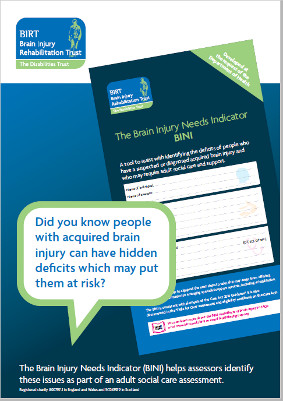
Download the resource as a PDF file (337KB)
This tool from the Brain Injury Rehabilitation Trust signposts to information about providing effective support to people with an acquired brain injury. The Brain Injury Needs Indicator (BINI) uses information from three sources to identify the level of risk an individual may have due to their brain injury. It can be used by social workers (or equivalent) and health professionals.
[_/su_spoiler]Tool 3: Male victims of elder abuse – summary of needs as described by victims
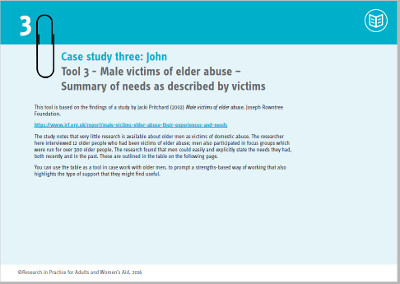
Download the resource as a PDF file (491KB)
This tool is based on the findings of a study by Jacki Pritchard (2002) Male victims of elder abuse. Joseph Rowntree Foundation:
https://www.jrf.org.uk/report/male-victims-elder-abuse-their-experiences-and-needs
The study notes that very little research is available about older men as victims of domestic abuse. The researcher here interviewed 12 older people who had been victims of elder abuse; men also participated in focus groups which were run for over 300 older people. The research found that men could easily and explicitly state the needs they had, both recently and in the past. These are outlined in the table below.
You can use the table as a tool in case work with older men, to prompt a strengths-based way of working that also highlights the type of support that they might find useful.
Table 1: Summary of needs as described by victims
| Needs as described by male victims of elder abuse | What are the strengths and assets in the service user’s current support system? | What areas require the support of additional care services? | How will this be provided? | When will this be reviewed, how and who by? |
| Advice | ||||
| Assessment of medical problems | ||||
| Assessment of mental capacity | ||||
| Company | ||||
| Maintaining contact with social worker | ||||
| Management of finances | ||||
| Permission to talk | ||||
| Personal safety | ||||
| Physical/basic care | ||||
| Place of safety | ||||
| Police involvement | ||||
| Practical help | ||||
| Protection of the abuse | ||||
| Reconciliation with the family | ||||
| Rehousing/permanent accommodation | ||||
| Remain loyal and do one’s duty | ||||
| Talk about abuse | ||||
| Talk about/deal with losses |
[_/su_spoiler] [_/su_accordion]
References
Johnson, M.P. (2008) A Typology of Domestic Violence: Intimate Terrorism, Violent Resistance, and Situational Couple Violence. The Northeastern series on gender, crime and law. Lebanon, New Hampshire, US: UPNE
Lafferty A, Treacy M, Fealy G, Drennan J and Lyons I (2012) Older People’s Experiences of Mistreatment and Abuse. NCPOP, University College Dublin. Available online: https://www.hse.ie/eng/services/Publications/olderpeople/mistreatementandabuse.pdf
Lewis S and Williams C (2015) 2nd Edition. Adult Safeguarding and Domestic Abuse: A guide to support practitioners and managers. LGA & ADASS. Available online: https://www.local.gov.uk/sites/default/files/documents/adult-safeguarding-and-do-cfe.pdf
Pritchard J (2002) Male victims of elder abuse: their experiences and needs. London: JRF. Available online: https://www.jrf.org.uk/report/male-victims-elder-abuse-their-experiences-and-needs
Tova Band-Winterstein, Hila Avieli, Yael Smeloy (2015) Harmed? Harmful? Experiencing Abusive Adult Children With Mental Disorder Over the Life Course Journal of Interpersonal Violence 31, 2598-2621
